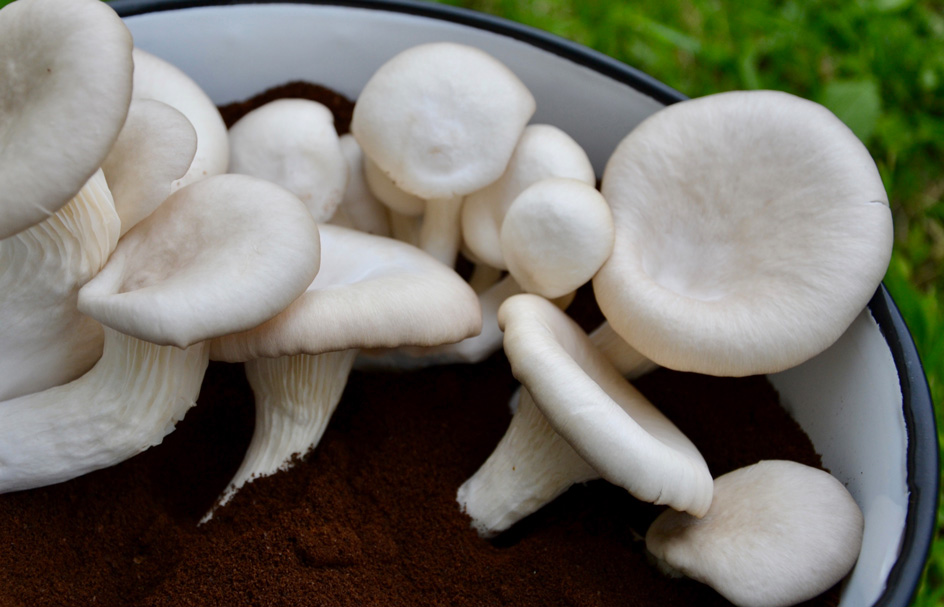25 Grams of Colombia Huila Buy Now
- Producer: Smallholder farmers
- Altitude: 1500–1850
- Coffee variety: Caturra, Castillo and Colombia
- Process: ferment-dry for a day, then washed
- Drying: covered concrete patios
- Profile: creamy, clean, mild acidity, sweet and fruity
- Roasted by: Wildkaffee
From bean to bottle
Crazy how time flies. This is already the 10th addition to our exquisite 25 GRAMS Cold Brew Coffee lineup. For this anniversary edition we bring you something truly special. Let’s welcome a new origin country: exotic Colombia! Best of all: we were there ourselves.
On the hunt for the ultimate coffee, the 25 GRAMS Team (Owner Lukas and his origin specialist Martin) traveled across the stunning Colombian landscapes early this year and returned with this gem. All right for some, you may think…but read on to find out how it all unfolded and why our batch #10 promises to tantalize your taste buds!
COLOMBIA – THE PROMISED COFFEE LAND
Right after the Vienna Coffee Festival in January, and just before Corona wreaked havoc around the world in March, we took off to explore Colombia. For Lukas, it was the first time to set foot on the holy coffee soil in South America. For Martin however, it was just “another day in the office” as he’d already lived there and also did his research on shade-grown coffee and climate change in a Colombian mountain village.
While Colombia produces and exports extraordinary coffee to aficionados around the world, it is also an incredibly diverse place: With a 3,200 km long coastline along both the Pacific Ocean and the Caribbean Sea, the country is also endowed with super high mountains, volcanos, lush rain forests, deserts, but also skyscrapers and modern mega cities. Whatever you can think of, Colombia has it.
The rich natural diversity of Colombia also manifests in its terroirs, presenting us coffee lovers with an abundance of deeply satisfying flavors. We decided to visit three different coffee regions and check out lots of coffee fincas, talk to farmers, their families, exporters, roasters, baristas and other incredibly friendly Colombians beyond the coffee scene.
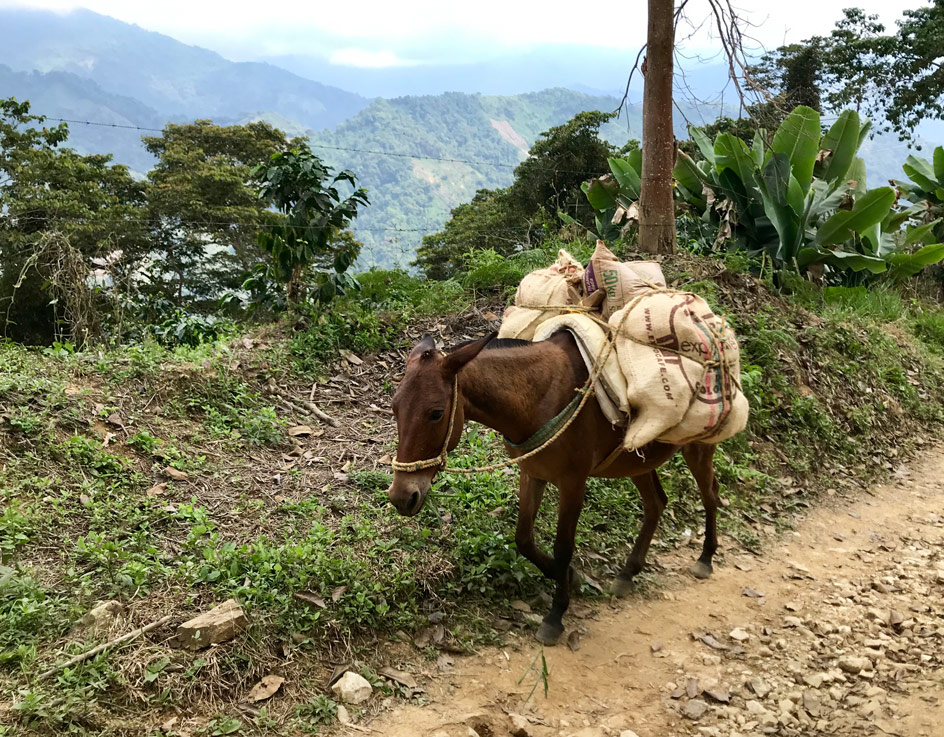
Colombia does not disappoint
After checking out Bogota’s coffee scene, we drove west to the departments of Cundinamarca and Tolima. We were immediately impressed by how beautiful and well-kept the coffee farms were, and how most coffee producers were very passionate about producing organic and sustainable coffee. Most farms were actually traditional polyculture systems with dense shade covers, which not only promotes ecological diversity but also helps to protect the soil, plants and workers from climatic influences.
We then traveled south to the department of Huila, which is the origin of batch #10. We flew with a 12-seat propeller-powered airplane and landed at Pitalito airport, which—although it looked and felt more like a bus stop—was brand new. Knowing that Huila has become a sort of specialty coffee mecca, we thought that a costly airport renovation may be evidence of the coffee industry’s positive impact in the region, only to be told by our taxi driver that it was actually some notorious drug cartels that had sponsored the new runway and tower. Yep, that’s also part of Colombia.

But back to dealing with coffee: the beans in this edition were grown by smallholder farmers in the region, each of them owning less than 10 hectares of land between 1,500 and 1,850 meters above sea level. Most farmer families live and work on their own farms and employ migrant workers for picking the cherries during harvest.
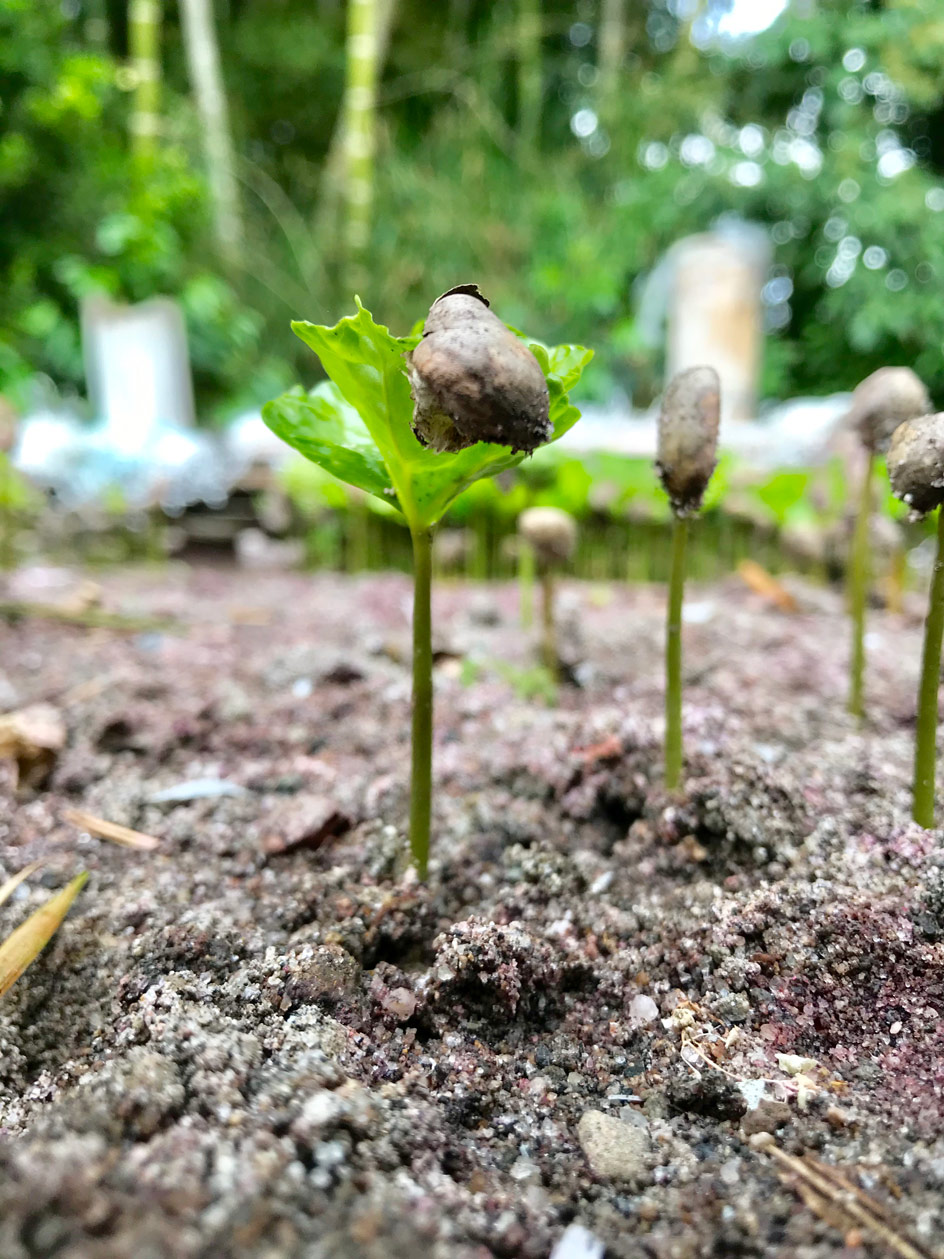
It’s no surprise why Huila is held in such high regard by the specialty coffee scene: the farmers’ know-how is truly impressive and you stumble from one learning experience to the next while the cuppings offer one highlight after the other. Fruity notes and clean cups, with still great body, and cup scores beyond 85 is what you can expect all day long. Perfect preconditions for a sweet 25 GRAMS cold brew

COFFEE BEANS AND PROCESSING
The coffee in batch #10 is a so-called variety blend. That means it has the same terroir but different coffee varieties, i.e. mainly Caturra and also some Castillo and Colombia. All the processing is done on-site, with each farm having its own small depulper. After picking the ripe cherries, the farmers dry-ferment the coffee for at least a day before depulping and washing it. Afterwards, the coffee is laid out and dried on the fincas’ concrete patios that are covered or can be covered when it rains.
Staying on the farms, sleeping where the pickers normally would, and eating and interacting with the farmers left a big impact on us. Seeing their hard daily work to produce the coffee we often take for granted was a truly humbling experience. We are truly grateful for their hospitality, but also their dedication, attention to detail and ultimately for producing the coffee we so much enjoy drinking.
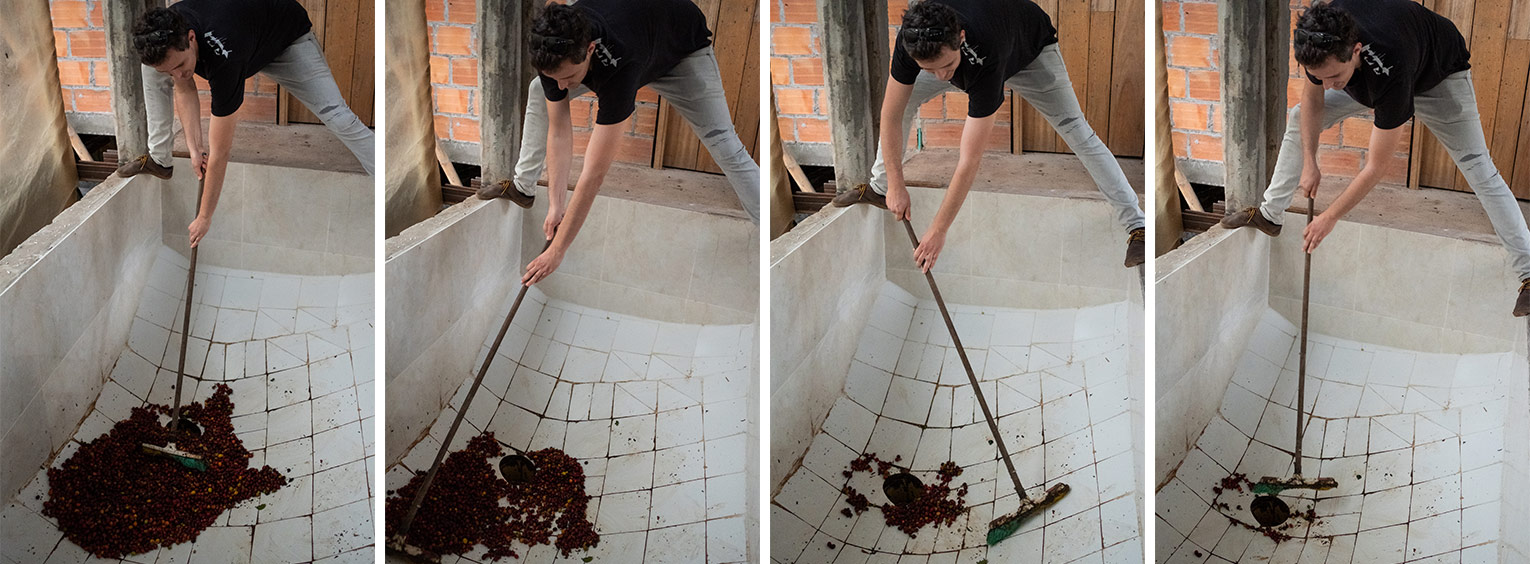
IMPORTING
After Huila and a short layover in Bogotá, we made it to the mighty Sierra Nevada de Santa Marta, a truly unique and mystic piece of land with peaks reaching up to 5,700 meters above the Caribbean Sea. This isolated mountain range is also home to the Kogi and other indigenous groups that are part of the Tairona culture, whose civilization has continued since the pre-Columbian era.
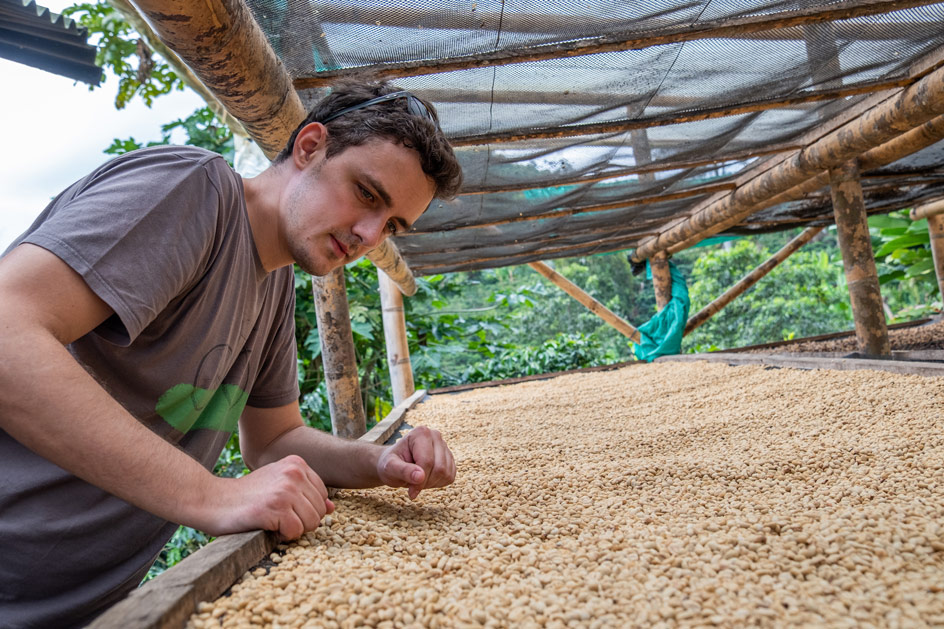
In Santa Marta, we were hosted by Red Ecolsierra, a farmer-owned organic cooperative that supports local farmers and exports their coffee from the port of Santa Marta to Europe and beyond. They shared with us their expert knowledge in everything from direct trade to the logistics and bureaucracies of exporting and shipping large amounts of coffee.
In the end, we realized that the quanitities we needed were just too small to take the leap into importing it on our own. Luckily, that’s not where it all ended. Only a few weeks before the big adventure, our partner and roaster from Wildkaffee had also made the journey to Colombia and had imported that amazing coffee from Huila himself, so we took the save way and participated there. A huge thanks for helping us out guys.
ROASTING
It´s already the third time we entrust the roasting magic to our good partners of Wildkaffee (www.wild-kaffee.de). We generally tend to use brighter roasts for our cold brews as we find that it gives the coffee a chance to fully express its unique character. Wildkaffee really know the kind of roasting profile we wish for and just do a brilliant job in highlighting the terroir of our coffee—in this case Huila. The first cupping already revealed the subtle and mild fruitiness and the creamy feel we remembered from the cuppings in this region. The terroir, along with a natural sweetness, really shines through with this spot-on roast profile. Thank you very much guys! Always a pleasure!
REUSING THE COFFEE GROUNDS
As always, after the cold-brewing process, we donate the used coffee grounds to our partner Pilzkiste, a start-up in Graz where Nina, Mercedes and Jasmin decided to end the needless waste of coffee grounds. So, they developed this fantastic urban mushroom farm and grow oyster mushrooms straight out of the coffee grounds. And yeah, besides being a truly sustainable initiative, the mushrooms are just badass. Go, check’em out!
